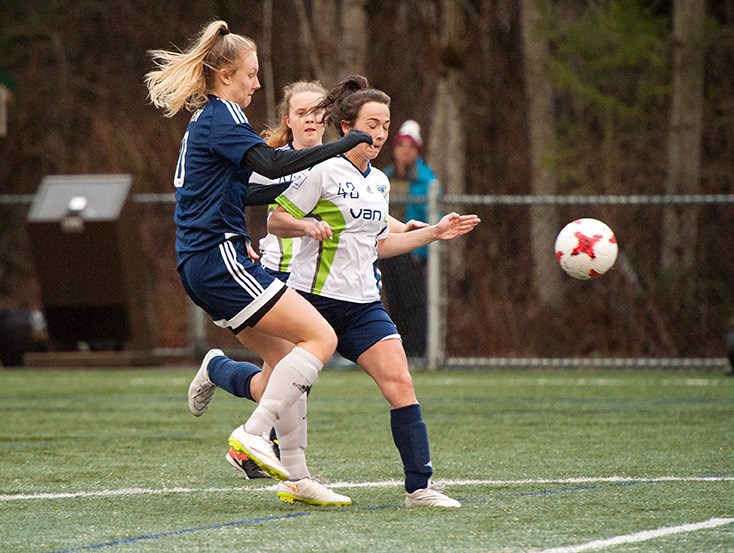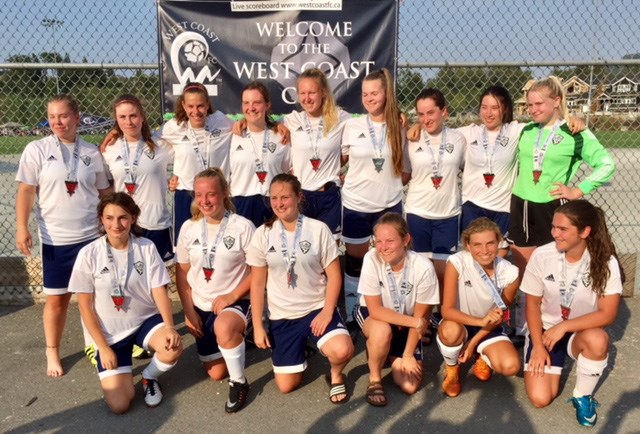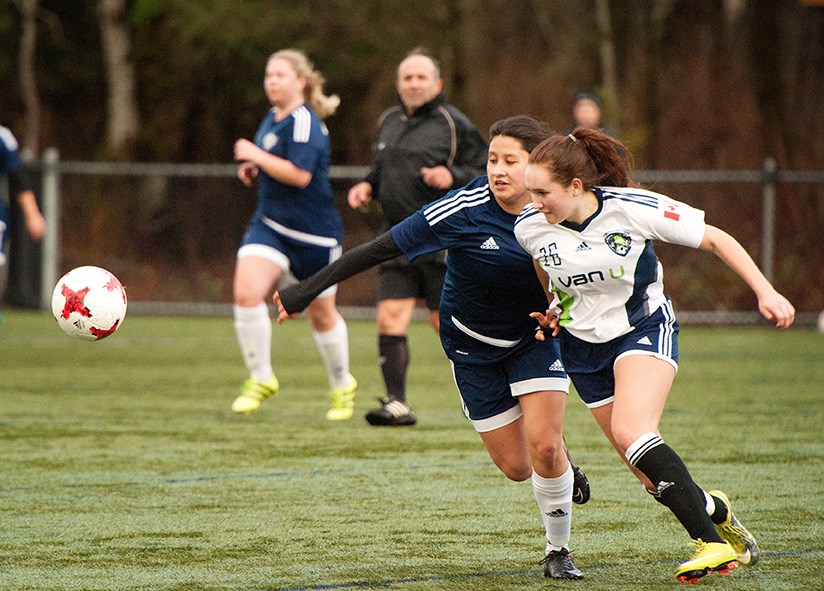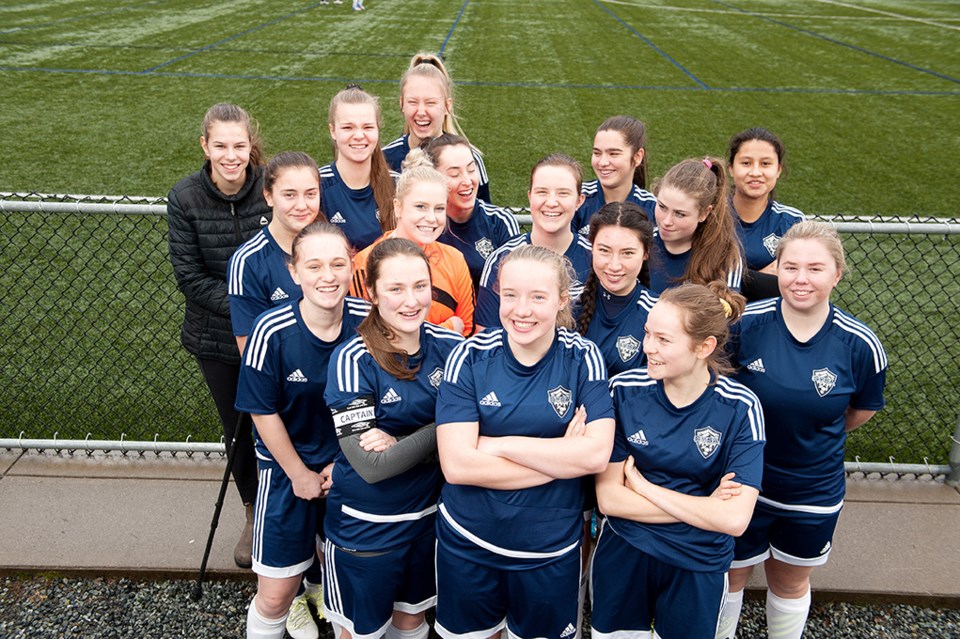Lots of kids of all ages love and play soccer in Squamish. So many in fact, there are more players than turf to play on.
Allie Hughes-Goyette, 16, is one of those players.
When the call came in that Hughes-Goyette had made the Mountain United FC team, one of eight teams in the BC Soccer Premier League, it was a real shock.
Playing for nearly a decade, she says the team sport is her passion in life. "Everything I do is for soccer, and I hope it will stay in my life for as long as I live," she said.
A member of the �鶹�����Youth Soccer Association house league, until she was 11 years old, Hughes-Goyette went on to play for select teams. At 14-years-old, she tried out for the Metro team in West Vancouver, where she immediately became captain. In December of 2015, she joined the MUFC team.
It takes hard work and determination — she plays almost every day of the week. "I do a lot of training outside my soccer practice," she explains. "Crossfit for strength, agility, and stamina as well as my overall lifestyle."
The weather tends to cancel games often. "When we are actually playing games, it makes it difficult to focus and pay attention to what you're doing," she says of the rain or flooding fields.
Marco Fanzone coached Hughes-Goyette and many other players over the years. "This is a kid that is very driven and serious about her game," he says.
Currently coaching two select teams, Fanzone sees the potential for growth outside athleticism, especially with the girls.

Fanzone said �鶹�����needs another turf field, citing the example of the senior girls' team: They train at 8:30 p.m., meaning girls from Whistler and Pemberton arrive home late. "Even for local girls, they don't get home until after 10 p.m. It's too late for our youth to be out there," he says. "The main problem with the grass fields is that there are no lights."
An additional turf field would change the community dynamic, allowing more sports to develop in Squamish, he adds. "We have the space," he says. "Next to the turf right now, is a gravel field with lights that's already been levelled."
Losing the grass fields in the spring is one of the club's biggest challenges, says Tim Sjogren, coach, and president of the SYSA. Another turf field would be a great benefit, he adds. "We don't have enough turf time for everyone who needs it," he explains. "We've lost all our games on a weekend because of snow."
Even a cover for the field will do. "It doesn't even need to be full sized," he explains. "Something that is domed would work." The club shares the field with several user groups. "The turf field is the only one with lights that they can train on," he explains.
That's where �鶹�����is at a disadvantage.

However, the community typically ranks as one of the highest in the province for playing the sport per capita, he adds.
�鶹�����lost some players over the years, and Sjogren attributes that to all the local outdoor recreation options. To combat these challenges, this year SYSA did not have a house league program for children 13 years old and above and expanded the select program, to allow committed older youth to develop further.
Sjogren would like to see more kids playing soccer. After all, it's the team sport of Squamish. "Our community is driven by individual sports, and this is a fantastic team sport, integral to youth upbringing," Sjogren says. "Kids develop life skills and learn how to play on a team."
Player Elly Hoskin loves the team bonding experience, competition, fitness and the idea that soccer can one day be her profession. The teenager says each time she's moved divisions there was a leap in expectations, skills, coaching, and commitment. "Even though you want to go, you don't want to leave your team behind," she explains.
Hoskin plans to play soccer for life. "I think there is something cool about soccer being universal," she says, recalling playing a game of pickup in Costa Rica when she didn't speak the same language. "It isn't a regional thing."
Peter Weiland is the head coach with the SYSA who says they're seeing more players step up to play in the high-performance league, BCPSL: As well, some of the select teams are dominating their league, especially the girls.
Again for Weiland, the most significant constraint — dependency on one turf field. "It's very heavily used, and we have the grass fields, which from September to October get soggy, and games have to be cancelled," he explains, noting the season runs through the winter. "We can't train all of our 700 kids."

Starting last fall, Weiland worked on changing the coaching model to align more closely with BC Soccer standards with the goal of getting players what they need to learn at each age group. He says they've had more opportunities to provide the right building blocks, by shifting the makeup of the house league and select teams. Training camps, for both girls and boys, are scheduled to begin in early April.
Weiland particularly appreciates working with younger age groups. "I love to see the kids who are enthusiastic," he explains. "They all believe they can be a superstar — so much heart. Seeing their creativity and guiding them along the way is a very fulfilling process."
For more information on the �鶹�����Youth Soccer Association go to




